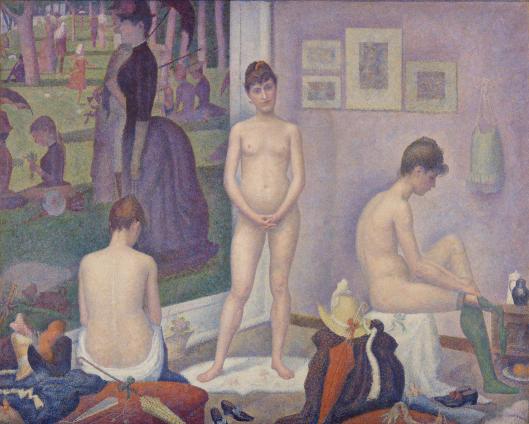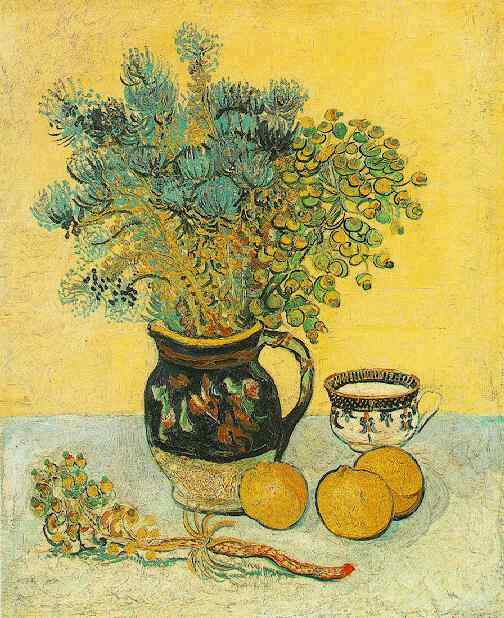I’m in Philadelphia on assignment for an inflight magazine. What follows is not that story. FYI — Because I’m on assignment, nearly all of my travel expenses, including the entrance fee to the museum I write about here, are covered by Visit Philly, the city’s tourism office.
Dear Dr. Barnes,
I want you to know that I studied painting — I have an undergraduate degree in fine art — and that I loved seeing the collection, loved it with my whole heart. It was not wasted on me and I really hope you don’t mind.
Thank you.

Seeing the Barnes Foundation collection is like being bludgeoned with an art history textbook. Hard cover. That you paid full price for, it’s not some marked up edition from the university book store, it’s brand new, and you bought it even though you sure could have used that 65 dollars for a good chunk of the rent for the crappy off campus apartment you share with that sign language translator… it literally left me gasping, so overwhelmed was I.
And that was before I’d got out of the first room. The Cezanne of the men playing cards was almost more than I could take, but then, above it, there’s a Seurat, a painting of three models. The audio guide says they’re auditioning for roles as artist’s models, it must be Seurat’s artists models because in the background of that painting, there it is, Seurat’s own A Sunday Afternoon on the Island of La Grande Jatte. Or, you know, Sunday in the Park as it’s more commonly known. Seurat painted his weirdly self-referential work, his models, his own painting. Sunday in the Park disappears off the edge, you just see one immediately recognizable section of it, and then, you want to peer into the frame, beyond the edge of it, to see the rest of the painting as though you’re stepping into some Beyond the Looking Glass version of it.
And then, just next door, there are the Renoirs, and they are so luscious and rich, like if you touched them they would feel like velvet washed pale but still so full of color. It goes on like that, room after room of absolute masterpiece, Picasso’s harlequins, their faces serious, their acrobat bodies so, well, lithe, but solid too, like they could step out and light up a cigarette because they’re on break. It’s one glorious, familiar work of art after the next, the style so known to this art student, like meeting old friends again but with no time passed, seeing them at their very best, still bright and young.
By the time I’d got to the Van Goghs — this is still on the first floor, mind you — I was exhausted. The postman, and then, that vase of wildflowers, I thought I might just dissolve into a puddle of tears. The building is beautiful too, a spare modern construction and the rooms, they mirror the way Barnes displayed the works when he had them under his control on a private property in Lower Merion.
Barnes died in a car accident in 1951 and his collection was subsequently taken over. There’s a documentary about the acquisition of the collection and its move to Philadelphia proper called The Art of the Steal. I watched the movie after seeing the collection in its new and admittedly spectacular location on Benjamin Franklin Parkway — I’m not so sure I’d have been able to go look at it had I seen the documentary first. Seeing it afterwards, well, that was like being tossed down the stairs a few times. This after the weighty blows of that art history book… ouch. (Artists can be very dramatic, no?)
According to The Art of the Steal, Barnes did not want his collection to be a tourist attraction, nor was he interested in art as a fashion accessory for the fancy people of Philly. He didn’t care that it was “inconvenient” to visit his property in Lower Merion — his facility was for learning, not for collecting postcards.

I would like to think that I could have passed Barnes’ scrutiny for what made an appropriate visitor to his collection, but who knows, he was apparently quite an eccentric old egg, a collector who had an eye for art that was well ahead of its time. I don’t know what he’d have made of me, should he have been able to step through time. I can tell you that he’d have found me standing in front of the Van Gogh still life for a very long time, my hand over my gaping mouth, my head shaking, and then, he’d have seen me go sit down and take a few very deep breaths while I tried not to fall utterly apart from the sheer beauty of this little painting.
It would have been tragic to have it locked away where I could not see it, but it is just as bad to learn that it was stolen from him and displayed to strangers as a curiosity to the supposedly cultured. And I feel an impossible weight of remorse and sadness telling you that truly, this collection will knock the wind right out of you, so full of spectacular paintings is it. Perhaps if you see the movie first, you will decline to go. But I am not sorry I did it the other way around, because that allowed me to fill my eyes with such glorious painting as I have not seen since the museums of Florence.
He’d have seen me in that first room, trying to peer into the Seurat, and let me see the rest, right?

As an almost lifelong Philadelphian, I can assure you that the Barnes’ old location in Lower Merion was inconvenient but DEFINITELY not inaccessible or “locked away where [you] could not see it.” Two stops on a train and a light walk. The art in its original location was even more magical, if you can imagine that. Tucked away in a secret garden. I consider myself lucky to have experienced it there, and have yet to see it in its Parkway location – which I’ve heard is spectacular. My heart just feels heavy to think of it there.